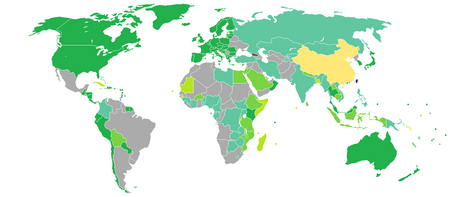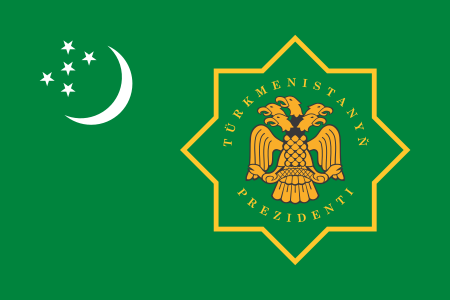422nd Rifle Division (Soviet Union)
| |||||||||||||||||||
Read other articles:

提示:此条目页的主题不是中國—瑞士關係。 關於中華民國與「瑞」字國家的外交關係,詳見中瑞關係 (消歧義)。 中華民國—瑞士關係 中華民國 瑞士 代表機構駐瑞士台北文化經濟代表團瑞士商務辦事處代表代表 黃偉峰 大使[註 1][4]處長 陶方婭[5]Mrs. Claudia Fontana Tobiassen 中華民國—瑞士關係(德語:Schweizerische–republik china Beziehungen、法語:…

安倍晋太郎安倍晋太郎(攝於1987年4月21日) 日本第112、113任外務大臣任期1982年11月27日—1986年7月22日总理中曾根康弘前任櫻内義雄继任倉成正 日本第42任通商產業大臣任期1981年11月30日—1982年11月27日总理鈴木善幸前任田中六助(日语:田中六助)继任山中貞則 日本第41任内閣官房長官任期1977年11月28日—1978年12月7日总理福田赳夫前任園田直继任田中六助(日语:�…

土库曼斯坦总统土库曼斯坦国徽土库曼斯坦总统旗現任谢尔达尔·别尔德穆哈梅多夫自2022年3月19日官邸阿什哈巴德总统府(Oguzkhan Presidential Palace)機關所在地阿什哈巴德任命者直接选举任期7年,可连选连任首任萨帕尔穆拉特·尼亚佐夫设立1991年10月27日 土库曼斯坦土库曼斯坦政府与政治 国家政府 土库曼斯坦宪法 国旗 国徽 国歌 立法機關(英语:National Council of Turkmenistan) 土�…

Upcoming Namma Metro station under Blue Line Doddanekundi Namma Metro stationUnder Construction of this metro station as of April 2024 under Phase 2A of Blue Line of Namma MetroGeneral informationLocationOuter Ring Rd, Ferns City, Doddanekundi, Marathahalli, Bengaluru, Karnataka 560037Coordinates12°58′32″N 77°41′50″E / 12.97563°N 77.69712°E / 12.97563; 77.69712Owned byBangalore Metro Rail Corporation Ltd (BMRCL)Operated byNamma MetroLine(s)Blue LinePlatformsSi…
Казахстан на Олимпийских играх Код МОК KAZ НОК Национальный олимпийский комитет Республики Казахстан Олимпийские игры в Пекине Спортсмены 132 в 18 видах спорта Знаменосец Бахыт Ахметов МедалиМесто 29 Золото Серебро Бронза Всего 2 2 4 8 Участие в летних Олимпийских иг…

Voce principale: Arma dei Carabinieri. Questa voce o sezione sull'argomento guerra è ritenuta da controllare. Motivo: Lunga esposizione completamente priva di citazioni e dal tono celebrativo in più punti. Probabile ricerca originale, inoltre stile da rivedere. Partecipa alla discussione e/o correggi la voce. Segui i suggerimenti del progetto di riferimento. Questa voce o sezione sull'argomento unità militari non cita le fonti necessarie o quelle presenti sono insufficienti. Puoi mi…

Part of the Politics seriesPopulism Variants Black Left-wing Judicial Narodniks Penal Poporanism Right-wing Techno- Concepts Anti-establishment Anti-intellectualism Anti-politics Common people Demagogy Depoliticisation Egalitarianism Elitism General will Mob rule Popular democracy Pluralism Social justice Third Position Regional variants Canada Europe Latin America New Zealand United States Related topics Agrarianism Alt-right Authoritarianism Berlusconism Chauvinism Chavismo Communism Erdoğani…

Выдающиеся полководцы и флотоводцы России Описание монеты Номинал Российский рубль Годы чеканки 2000, 2002, 2013 Аверс Описание серии (группы) Эмитент Российская Федерация Денежная единица Российский рубль Номиналы 3 рубля, 25 рублей, 50 рублей Материалы серебро, золото Типы 3 Раз�…

علم الأنظمةأنظمة التفكير في المجتمع.صنف فرعي من العلوم الشكليةيمتهنه عالم أنظمة الموضوع نظام، نظام حيويتعديل - تعديل مصدري - تعديل ويكي بيانات علم الأنظمة هو مجال متعدد التخصصات يدرس طبيعة الأنظمة -من بسيطة إلى معقدة- في الطبيعة، والمجتمع، والإدراك، والهندسة، والتكنولوجيا …

Former religious house in Herefordshire This article needs additional citations for verification. Please help improve this article by adding citations to reliable sources. Unsourced material may be challenged and removed.Find sources: Wigmore Abbey – news · newspapers · books · scholar · JSTOR (June 2013) (Learn how and when to remove this message) Remains of Wigmore Abbey. Wigmore Abbey was an abbey of Canons Regular with a grange, from 1179 to 1530, sit…
System involved in supplying a product or service to a consumer Business logistics Distribution methods Distribution centers Digital distribution Order processing Trade routes Order fulfillment Cross-docking Sustainable distribution Commercial vehicle Distribution resource planning Third-party logistics Management systems Packaging and labeling Warehouse management system Supply chain Delivery (commerce) Field inventory management Inventory turnover Stock keeping unit Decision-making Industry cl…

Questa voce o sezione sull'argomento radio non cita le fonti necessarie o quelle presenti sono insufficienti. Puoi migliorare questa voce aggiungendo citazioni da fonti attendibili secondo le linee guida sull'uso delle fonti. Segui i suggerimenti del progetto di riferimento. Radio LombardiaLogo di Radio LombardiaPaese Italia Linguaitaliano Frequenze100.3 FM Data di lancio1975 EditoreR.C.S. srl Frequenze precedentiRadio Celentano MottoNon ci fermiamo mai Sito webwww.radiolombardia.it Di…

هذه المقالة بحاجة لصندوق معلومات. فضلًا ساعد في تحسين هذه المقالة بإضافة صندوق معلومات مخصص إليها. يفتقر محتوى هذه المقالة إلى الاستشهاد بمصادر. فضلاً، ساهم في تطوير هذه المقالة من خلال إضافة مصادر موثوق بها. أي معلومات غير موثقة يمكن التشكيك بها وإزالتها. (فبراير 2016) الطريق �…

American playwright and screenwriter (born 1977) Beau WillimonWillimon in 2015BornPack Beauregard Willimon (1977-10-26) October 26, 1977 (age 46)Alexandria, Virginia, U.S.EducationColumbia University (BA, MFA)Juilliard School (GrDip)Occupation(s)Playwright, screenwriter, producerTitlePresident of the Writers Guild of America, EastTerm2017–present Pack Beauregard Willimon[1] (born October 26, 1977) is an American playwright and screenwriter. He developed the American version of the…

This article does not cite any sources. Please help improve this article by adding citations to reliable sources. Unsourced material may be challenged and removed.Find sources: Advising bank – news · newspapers · books · scholar · JSTOR (December 2009) (Learn how and when to remove this message) Part of a series on financial servicesBanking Types of banks Advising Banq Bulge bracket Central Commercial Community development Cooperative Credit union Custodi…

Sporting event delegationUnited States at the1920 Summer OlympicsFlag of the United StatesIOC codeUSANOCAmerican Olympic Committeein AntwerpCompetitors288 (274 men and 14 women) in 18 sportsFlag bearerPat McDonaldMedalsRanked 1st Gold 41 Silver 27 Bronze 27 Total 95 Summer Olympics appearances (overview)189619001904190819121920192419281932193619481952195619601964196819721976198019841988199219962000200420082012201620202024Other related appearances1906 Intercalated Games The United States com…

Japanese film director and screenwriter Osamu DezakiBorn(1943-11-18)November 18, 1943Shinagawa, TokyoDiedApril 17, 2011(2011-04-17) (aged 67)Occupation(s)Director, animator, screenwriterYears active1963–2011RelativesSatoshi Dezaki (brother) Part of a series onAnime and manga Anime History Voice acting Companies Studios Original video animation Original net animation Fansub Fandub Lists Longest series Longest franchises Manga History Publishers International market Manga artist Do…

奥尔塔市及海湾 38°34′46″N 28°42′59″W / 38.57944°N 28.71639°W / 38.57944; -28.71639 奧爾塔(葡萄牙語:Horta,葡萄牙語發音:[ˈɔɾtɐ] (ⓘ))是葡萄牙亞速爾群島中部法亞爾島上的唯一的市镇。始建於1498年,面積173.06平方公里,海拔高度404米,2011年人口15,038,該市鎮人口密度每平方公里87人。 图集 1589年的奥尔塔湾及主要定居点 描绘大约1842年时奥尔塔的图�…

عين حلوان الاسم الرسمي عين حلوان الإحداثيات 29°51′46″N 31°19′30″E / 29.862661111111°N 31.325011111111°E / 29.862661111111; 31.325011111111 تقسيم إداري البلد مصر التقسيم الأعلى حلوان خصائص جغرافية المساحة 13769.819 كيلومتر ارتفاع 33 متر عدد السكان عدد السكان 35450 …

Bay in Crimea For a Russian air base, see Donuzlav (air base). DonuzlavДонузлав, DoñuzlavDonuzlav Lake near NovoozerneDonuzlavLocationCrimeaCoordinates45°20′24″N 33°00′36″E / 45.34000°N 33.01000°E / 45.34000; 33.01000 Donuzlav Lake on the map Lake Donuzlav (Russian and Ukrainian: Донузлав, Crimean Tatar: Doñuzlav), also referred to as Donuzlav Bay, is the deepest lake[1] of Crimea (27 m, 89 ft) and biggest in Chornomorske Ra…
